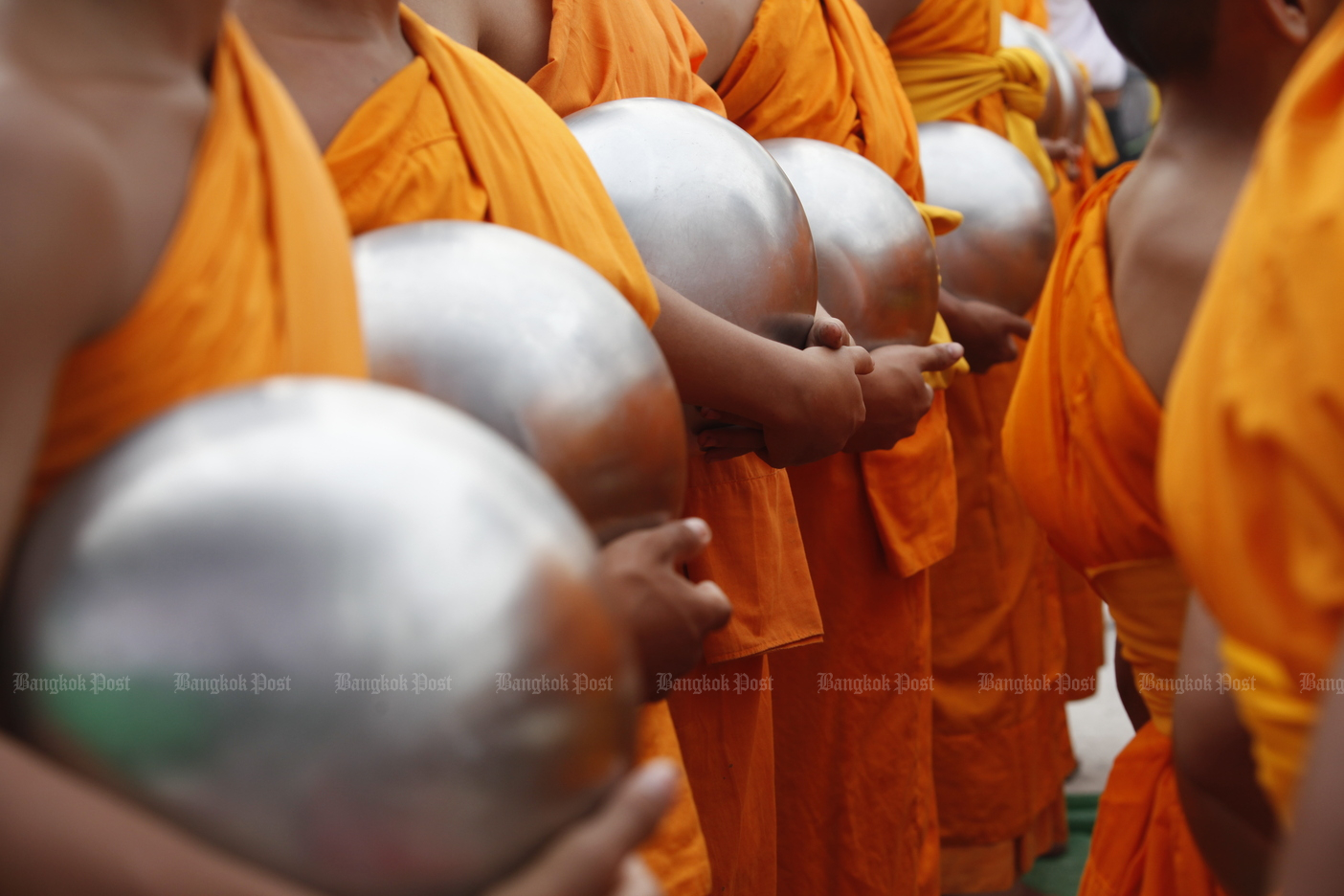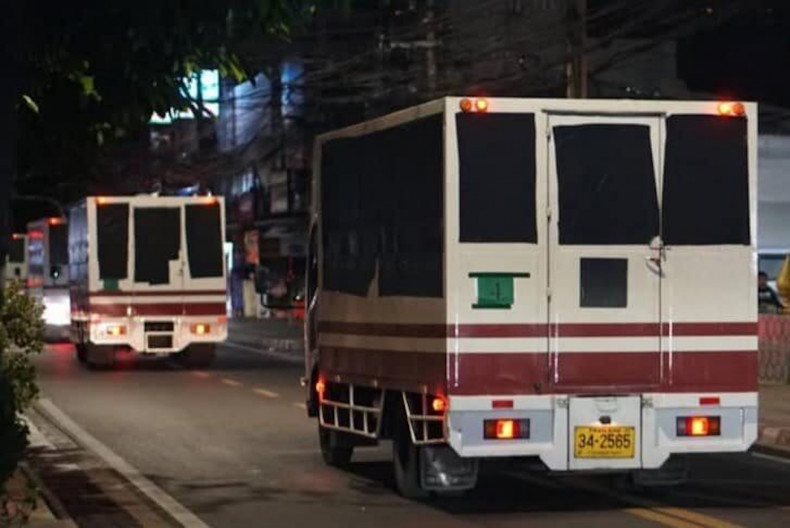Thailand sustains a centuries-old alliance between the Crown and Buddhist monastic communities through a formal monthly food allowance program known as Nittayapat. This system, rooted in royal patronage, assigns monthly stipends to monks and novices according to ecclesiastical rank, reflecting both a long tradition and a modern government-administered framework. At its core, Nittayapat represents the King’s ongoing support for Buddhist life, ensuring that monastic communities can carry out their spiritual duties, governance, education, and public welfare activities with a stable means of subsistence. The practice began as a display of royal Buddhist faith—monarchs historically demonstrated pious commitment by supplying meals, requisites, and annual stipends to the clergy. Over time, reform and administration evolved; under King Rama I, the system shifted from annual payments to monthly allowances, with scales calibrated to monastic hierarchy. Today, the Department of Religious Affairs, operating under the Ministry of Education, administers the program, distributing funds annually to back a broad array of religious activities including administration, governance, religious education, Buddhist propagation, and social welfare services. The Nittayapat framework thus integrates traditional royal patronage with modern bureaucratic oversight, sustaining Thailand’s long-standing relationship between the state and Buddhist institutions.
Historical Context and Royal Patronage in Thai Buddhism
The Nittayapat scheme is more than a stipend; it embodies a historical pledge that the Thai monarchy honors Buddhist communities by ensuring material means for spiritual work. Historically, Thai monarchs made visible expressions of faith through allocations of food, requisites, and annual stipends to monks and novices, reinforcing the monarchy’s role as protector and benefactor of the Sangha. In the early modernization era, reform efforts sought to systematize this support within a more predictable, accountable governmental structure. When Rama I assumed the throne, the annual dispensation of resources to the monastic order transitioned into a monthly framework. This reform did not merely change payment frequency; it introduced a hierarchical structure wherein the size of the monthly allowance aligned with the holder’s ecclesiastical rank. The aim was to ensure that monks and novices could fulfill their spiritual obligations while enjoying a baseline of living security proportional to their duties and responsibilities within the monastic system. The Thai government’s current interpretation retains the essential objective: preserve the dignity and practicality of monastic life through steady funding, while anchoring this support within an established public administration.
The royal-to-state transfer of funds today is overseen by a dedicated government department, reflecting a continuity of tradition within a modern administrative context. The Department of Religious Affairs, which operates under the Ministry of Education, is responsible for administering the program and distributing annual funds. Through this mechanism, Nittayapat supports a range of religious activities that go beyond the monks’ private sustenance. It underwrites temple administration and governance, religious education programs, Buddhist propagation activities, and various public welfare services rooted in monastic institutions. This structure preserves a historical bond between the monarchy’s spiritual auspices and the state’s educational and social welfare apparatus, ensuring that monasteries can function as centers of learning, moral guidance, and community service.
The evolution from annual stipends to a monthly, rank-based system also mirrors a broader effort to professionalize and stabilize Buddhist finances within the public sector. The monthly allowances are designed to reflect the degree of responsibility and leadership associated with different ranks within the Sangha. Consequently, the financial support is not a flat stipend for all clerics; it is a nuanced compensation regime that recognizes the varied duties—from supreme leadership roles to district-level responsibilities and specialized ecclesiastical offices. This design underscores the integration of spiritual vocation with administrative accountability, aiming to sustain monastic life in a way that aligns with Thailand’s modern governance standards while preserving the cultural and religious significance of royal patronage.
Administrative Framework, Funding, and Governance
The current administrative framework for Nittayapat places responsibility on the Department of Religious Affairs, a unit within the Ministry of Education. This department oversees the distribution of funds on an annual basis, ensuring that financial resources reach monasteries and religious bodies to support a wide spectrum of activities. The program’s funding envelope is directed toward activities that are central to Buddhist practice and community leadership: administration and governance of temples, religious education initiatives, the propagation of Buddhist teachings, and public welfare services delivered through monastic channels. This approach reinforces the Sangha’s role in both spiritual leadership and social service, emphasizing that the monastic community is not only a religious entity but also an integral part of the public welfare architecture.
From a governance perspective, the rank-based structure of Nittayapat is critical. By calibrating monthly allowances to ecclesiastical order, the system creates a transparent and traceable framework for financial support. Each rank corresponds to a defined monthly amount, which reflects the expected scope of duties and leadership within that tier of the monastic hierarchy. This clarity helps ensure accountability and facilitates oversight by the government, the Sangha, and associated educational institutions. It also provides monks with a predictable salary-like mechanism that reduces financial uncertainty, enabling more stable planning for temple activities, religious education programs, and community outreach.
The program’s design further aligns with the broader Thai approach to public finance: allocate resources according to role, need, and contribution to public goods. In the context of Nittayapat, the recipients are religious leaders and administrators who, through their roles, contribute to spiritual guidance, education, and social welfare. The annual funding cycle requires careful budgeting and coordination among monasteries and temples, with the Department of Religious Affairs acting as the central administrator. This centralized approach helps standardize the practice nationwide, ensuring that monasteries of varying sizes and locations receive support consistent with their rank and responsibilities, while also enabling the government to monitor compliance, performance, and the impact of funds on religious and social activities.
The program’s scope extends to supporting not only day-to-day living for monks but also the broader institutional needs of Buddhist education and governance. By funding religious education programs, temple governance activities, and propagation efforts, Nittayapat helps sustain a robust monastic ecosystem capable of training monks, guiding youth and lay followers, and maintaining temples as centers of culture and community service. The administrative framework thus reinforces the Thai state’s commitment to the Buddhist establishment as a cornerstone of national identity, social cohesion, and cultural continuity.
Legal Tax Status: Exemption, Income, and Obligations
A defining feature of Nittayapat is its tax treatment under Thai law. The monthly allowances and ceremonial offerings provided by lay devotees are tax-exempt when allocated as Nittayapat and kathin offerings. This tax-exempt status is grounded in the Revenue Code, specifically Section 42(10), which defines certain types of income as “income received from maintenance according to moral duty in accordance with customary traditions.” Under this provision, these funds are not considered taxable income. The tax exemption underscores the state’s recognition of the special role of monastic sustenance in the Buddhist social contract: as long as the funds represent maintenance in line with tradition and are provided through the customary channel of lay devotion, they are not subject to income tax.
It is important to note that this exemption is narrowly scoped. The tax code draws a boundary around what constitutes Nittayapat and kathin offerings from lay devotees, distinguishing them from other forms of income that monks might generate. If a monk invests donations to generate returns—such as earning bank interest or profits from a business—those returns become taxable. This provision ensures that the tax-exempt status applies specifically to traditional, non-commercial forms of support tied to monastic maintenance and ceremonial offerings.
Additionally, earnings from salaries tied to teaching positions at Mahachulalongkornrajavidyalaya University (MCU) fall under a separate tax rule. Monks who receive salaries for teaching duties at MCU are subject to tax on those earnings under Section 40(1) of the Revenue Code. This distinction highlights how different streams of monk income are treated under Thai tax law, ensuring that compensation linked to pedagogical work within a university setting is assessed as taxable income, while traditional monastic maintenance payments remain exempt when aligned with customary practice.
The tax framework serving Nittayapat thus creates a nuanced balance: it preserves the tax-exempt status for traditional, ritual, and maintenance-based offerings that support monastic life and religious duties, while applying standard tax rules to non-traditional income sources and professional wages earned in religious education contexts. This approach reflects policy goals to sustain religious life and public welfare activities while encouraging appropriate reporting and taxation of income generated through non-traditional channels.
The Nittayapat Schedule: A Detailed Rank-by-Rank Breakdown
A central feature of the Nittayapat program is its explicit, rank-based schedule of monthly allowances. The amounts vary significantly across categories, reflecting the responsibilities, leadership roles, and governance duties associated with each rank within the Buddhist monastic hierarchy. Below is a comprehensive, structured presentation of the monthly allowances as specified by rank, retaining the precise values and titles as part of the program’s documentation. The schedule covers a broad spectrum—from the highest ecclesiastical offices to specialized roles within monasteries and district administration.
Somdej Phra Sangharaja
- Somdej Phra Sangharaja (Supreme Patriarch) – 34,200 baht per month
- Somdej Phra Racha Khana – 27,400
- Somdej Phra Racha Khana of the Second Class – 20,500
Phra Racha Khana - Phra Racha Khana of the Dharma Class – 13,700
- Phra Racha Khana of the Deba Class – 10,300
- Phra Racha Khana of the Raja Class – 6,900
- Phra Racha Khana of the Saman Yok Class – 4,100
- Phra Racha Khana of the Saman Yok Class – 3,800
Phra Kru Palad Phra Racha Khana - Phra Kru Palad Phra Racha Khana – 3,800
- Phra Kru Palad, Phra Racha Khana of the Second Class – 3,400
- Phra Kru Palad, Phra Racha Khana of the Dharma Class – 2,700
Phra Kru - Phra Kru of the First Class, Somdej Phra Sangharaja Ecclesiastical Orders – 3,100
- Phra Kru of the Second Class, Somdej Phra Sangharaja Ecclesiastical Orders – 2,700
Phra Kru Sanyabat (Royal Monastery) - Phra Kru Sanyabat of the First Class Royal Monastery – 3,800
- Phra Kru Sanyabat of the Second Class Royal Monastery – 3,400
- Phra Kru Sanyabat of the Third Class Royal Monastery – 3,100
Phra Kru Sanyabat (District Officers) - Phra Kru Sanyabat, Ecclesiastical District Officer of the Special Class – 3,800
- Phra Kru Sanyabat, Ecclesiastical District Officer of the First Class – 3,400
- Phra Kru Sanyabat, Ecclesiastical District Officer of the Second Class – 3,100
- Phra Kru Sanyabat, Vice Ecclesiastical District Officer of the First Class – 3,100
- Phra Kru Sanyabat, Vice Ecclesiastical District Officer of the Second Class – 2,700
Phra Kru Sanyabat (Commune Chiefs) - Phra Kru Sanyabat, Ecclesiastical Commune-Chief of the First Class – 3,100
- Phra Kru Sanyabat, Ecclesiastical Commune-Chief of the Second Class – 2,700
- Phra Kru Sanyabat, Ecclesiastical Commune-Chief of the Third Class – 2,500
Phra Kru Sanyabat (Royal Monastery Staff) - Phra Kru Sanyabat, Assistant Abbot of the Special Class Royal Monastery or equivalent – 3,400
- Phra Kru Sanyabat, Deputy Abbot of the First Class Royal Monastery – 3,400
- Phra Kru Sanyabat, Deputy Abbot of the Second Class Royal Monastery – 3,100
- Phra Kru Sanyabat, Assistant Abbot of the First Class Royal Monastery or equivalent – 3,100
- Phra Kru Sanyabat, Assistant Abbot of the Second Class Royal Monastery or equivalent – 2,700
- Phra Kru Sanyabat, Deputy Abbot of the Third Class Royal Monastery – 2,700
Phra Kru Sanyabat (Private Monastery) - Phra Kru Sanyabat, Abbot of the First Class Private Monastery – 2,700
- Phra Kru Sanyabat, Abbot of the Second Class Private Monastery – 2,500
- Phra Kru Sanyabat, Abbot of the Third Class Private Monastery – 2,200
- Phra Kru Sanyabat, Deputy Abbot of the Private Monastery – 1,800
- Phra Kru Sanyabat, Assistant Abbot of the Private Monastery – 1,800
Phra Kru Sanyabat (Secretarial Positions) - Phra Kru Sanyabat, Secretary to the Ecclesiastical Regional Governor – 3,400
- Phra Kru Sanyabat, Secretary to the Vice Ecclesiastical Regional Governor – 3,100
- Phra Kru Sanyabat, Secretary to the Ecclesiastical Provincial Governor – 3,100
- Phra Kru Sanyabat, Secretary to the Ecclesiastical District Officer – 2,200
- Phra Kru Sanyabat, Secretary to the Vice Ecclesiastical District Officer – 1,800
Ecclesiastical Governors and Officials - The Ecclesiastical Regional Governor – 17,100
- The Vice Ecclesiastical Regional Governor – 13,700
- The Ecclesiastical Provincial Governor – 10,300
- The Vice Ecclesiastical Provincial Governor – 4,500
Sangha Council and Court Officials - The Sangha Supreme Council – 23,900
- The Chief Superintendent of the Ecclesiastical Courts – 23,900
Academic Office Heads - Head of the Royal Pali Studies Office – 17,100
- Head of the Royal Dhamma Studies Office – 17,100
Secretaries to High Officials - The Secretary to the Supreme Patriarch – 10,300
- The Secretary to the Chief Superintendent of the Ecclesiastical Courts – 3,800
- The Secretary to the Vice Ecclesiastical Provincial Governor – 2,700
- The Secretary to the Ecclesiastical Commune-Chief – 1,200
- The Secretary to the Vice Ecclesiastical District Officer – 1,800
Parian Graduates - Graduates of Parian Nine – 5,500
- Graduates of Parian Seven and Eight – 5,200
- Graduates of Parian Five and Six (The Abbot of the First Class Royal Monastery) – 4,800
- Graduates of Parian Four (The Abbot of the Second Class Royal Monastery) – 4,500
- Graduates of Parian Three (The Abbot of the Third Class Royal Monastery) – 4,100
Abbots - The Abbot of the First Class Royal Monastery – 4,800
- The Abbot of the Second Class Royal Monastery – 4,500
- The Abbot of the Third Class Royal Monastery – 4,100
- Abbot – 2,500
Temple-Specific and General Positions - Phra Paritta Wat Chana Songkhram – 1,800
- Junior Monks at Wat Chuthathit Thammasapharam – 1,800
- Ritual-Performing Monk – 1,800
- Buddhist Ecclesiastical Official Monk (Non-Phra Kru Sanyabat) – 1,800
These detailed monthly figures illustrate the breadth of the Nittayapat scheme, touching every level of monastic administration, education, governance, and community service. They provide a transparent, rank-based framework for compensation that complements the program’s broader objectives of supporting spiritual work, temple administration, religious education, and social welfare activities associated with Buddhist institutions in Thailand.
Financial Flows, Implementation, and Oversight
The Nittayapat program operates on annual fund allocation and distribution managed by the Department of Religious Affairs. Funds are channeled to support a wide range of religious activities, not only to ensure the daily perquisites of monastic life but also to underwrite programs that strengthen religious education, governance structures within temples, and public welfare initiatives connected to Buddhist practice. The annual funding approach requires careful budgeting and coordination with temples, monasteries, and associated educational institutions to ensure that the monthly allowances properly reflect rank and the program’s intended purposes.
Implementation hinges on clear alignment between rank categories and corresponding monthly amounts. This alignment supports accountability and helps prevent discrepancies in disbursement. It also provides a predictable framework for monasteries to plan expenditures related to administration, governance, and community outreach. The funding distributed through Nittayapat thus supports the structural integrity of monastic communities, enabling them to sustain day-to-day operations and to invest in religious education, temple governance, and charitable activities that serve lay followers and the broader public.
The allocation process is designed to be transparent and consistent, with the aim of fostering trust between the Sangha and the state authorities. It is essential for monasteries to maintain precise records of how funds are used, particularly given the broad scope of eligible activities—from temple administration to Buddhist propagation and public welfare services. Oversight mechanisms are required to ensure funds are employed in ways that uphold the program’s objectives, comply with legal guidelines, and contribute meaningfully to the spiritual and social life of Buddhist communities across the country.
In practice, the annual funding cycle supports a multi-faceted operational environment. Monastic orders utilize Nittayapat for administrative costs related to temple governance, including staff, maintenance, and community services. They also deploy resources for religious education programs that train monks and educate lay followers, as well as for propagation activities that expand Buddhist teachings and practice. Finally, public welfare services delivered through monastic channels benefit local communities through charitable actions, healthcare-related outreach, disaster relief, and other forms of social support anchored in Buddhist ethics. The financial flows thus connect spiritual duties with tangible social impact, reinforcing the role of Buddhism as a living tradition deeply embedded in Thai society.
Implications for Monastic Life, Education, and Public Welfare
The Nittayapat system has wide-ranging implications for the daily lives of monks and for the broader function of monasteries as educational and social institutions. By providing reliable monthly allowances tied to rank, the program helps ensure that monks can focus on their spiritual duties without the distraction of financial insecurity. The stability afforded by Nittayapat supports ongoing religious practice, meditation, study, and monastic governance. It also safeguards basic living standards, enabling monks to participate more fully in community life, teaching, and social service activities that are core to Buddhist monastic life in Thailand.
Beyond the personal well-being of individual monks, the funding stream strengthens the capacity of monasteries to undertake religious education. Education is central to the monastic mission, from rigorous study in canonical and scholastic fields to the training of novices in moral and disciplinary codes. The allowances enable temples to maintain organizational structures that can sustain curricula, host workshops, and facilitate scholarly work at both local and regional levels. In addition, the program’s support for governance and administration underscores the Sangha’s role as a stable, organized institution capable of managing temples and associated activities with a degree of professionalization that mirrors secular institutions in modern society.
The social dimension of Nittayapat is also evident in its support for Buddhist propagation and public welfare services. Propagation efforts—designed to spread Buddhist teachings and values—benefit from the ability to organize events, publish materials, and support outreach programs that engage lay communities. Public welfare initiatives—often organized or coordinated by temples—address essential community needs, from charitable activities to educational programs and cultural events that reinforce shared values. In this way, Nittayapat not only sustains monastic life but also reinforces the monastery’s place as a community hub that contributes to social cohesion, ethical development, and cultural continuity.
The implications for Thailand’s broader economy and society are multifaceted. The program reinforces the traditional link between the state and Buddhist institutions, reflecting a policy commitment to support religious life as a key cultural and social infrastructure. It acknowledges the Sangha’s central role in education, moral guidance, and community welfare, and it ensures that monastic communities can operate with a degree of financial independence and reliability. This structure helps preserve the institutional memory and continuity of Thai Buddhism while allowing modern governance to manage funds efficiently, transparently, and in alignment with national educational and welfare objectives.
Cultural Significance, Education, and Global Context
Nittayapat embodies a unique cultural practice in which state resources, royal patronage, and monastic life intersect to sustain Thailand’s Buddhist heritage. The program demonstrates how deeply rooted monastic life is in Thai national identity, with the monarchy’s continuing spiritual and material support reinforcing the relationship between the Crown, the Sangha, and the public. The allowances are more than monetary support; they are a symbol of ongoing respect for monastic leadership, a recognition of the temple as a center of learning and social service, and a concrete mechanism through which spiritual life contributes to the welfare and stability of communities.
In the realm of international Buddhist practice, Thailand’s approach to royal patronage and state-funded monastic support represents a distinctive model of blending tradition with modern governance. While other Buddhist-majority countries maintain various forms of monastic support, Thailand’s rank-based, government-administered scheme stands out for its explicit, hierarchical stipend structure and its integration with national education and welfare policies. The Nittayapat program thereby serves as both a national tool for sustaining Buddhist institutions and a cultural emblem of the close, ongoing relationship between religious life, public policy, and royal patronage in Thailand.
Future considerations for Nittayapat include continuing to balance tradition with fiscal sustainability, ensuring transparency in disbursement, and maintaining the program’s alignment with the evolving needs of monasteries, monks, and lay communities. As monastic life and religious education adapt to changing social contexts, the system may require periodic reviews to confirm that the rank-based allowances remain appropriate to current roles and responsibilities within the Sangha. At the same time, the core objective remains clear: to empower monks to pursue spiritual duties, maintain basic living standards, and contribute to a stable, educated, and morally grounded society.
Conclusion
Thailand’s Nittayapat framework embodies a deep-rooted tradition of royal and state support for Buddhist institutions, reimagined for a modern administrative landscape. By tying monthly allowances to ecclesiastical rank, the program ensures that monastic life can flourish with dignity while contributing to temple governance, religious education, propagation of Buddhist teachings, and public welfare services. The Department of Religious Affairs, under the Ministry of Education, administers this complex system, distributing funds annually to sustain a broad spectrum of religious activities and monastic outreach. The tax-exempt status for Nittayapat and kathin offerings, alongside the taxable treatment of certain other monk incomes, highlights a carefully drawn legal framework designed to preserve the traditional integrity of monastic maintenance while accommodating the realities of contemporary earnings. The extensive rank-by-rank schedule illustrates the breadth of the Sangha’s organizational structure and the government’s commitment to supporting its leadership and activities. Together, these elements underscore Thailand’s enduring dedication to Buddhist life as a pillar of national culture, spiritual leadership, and social service.



